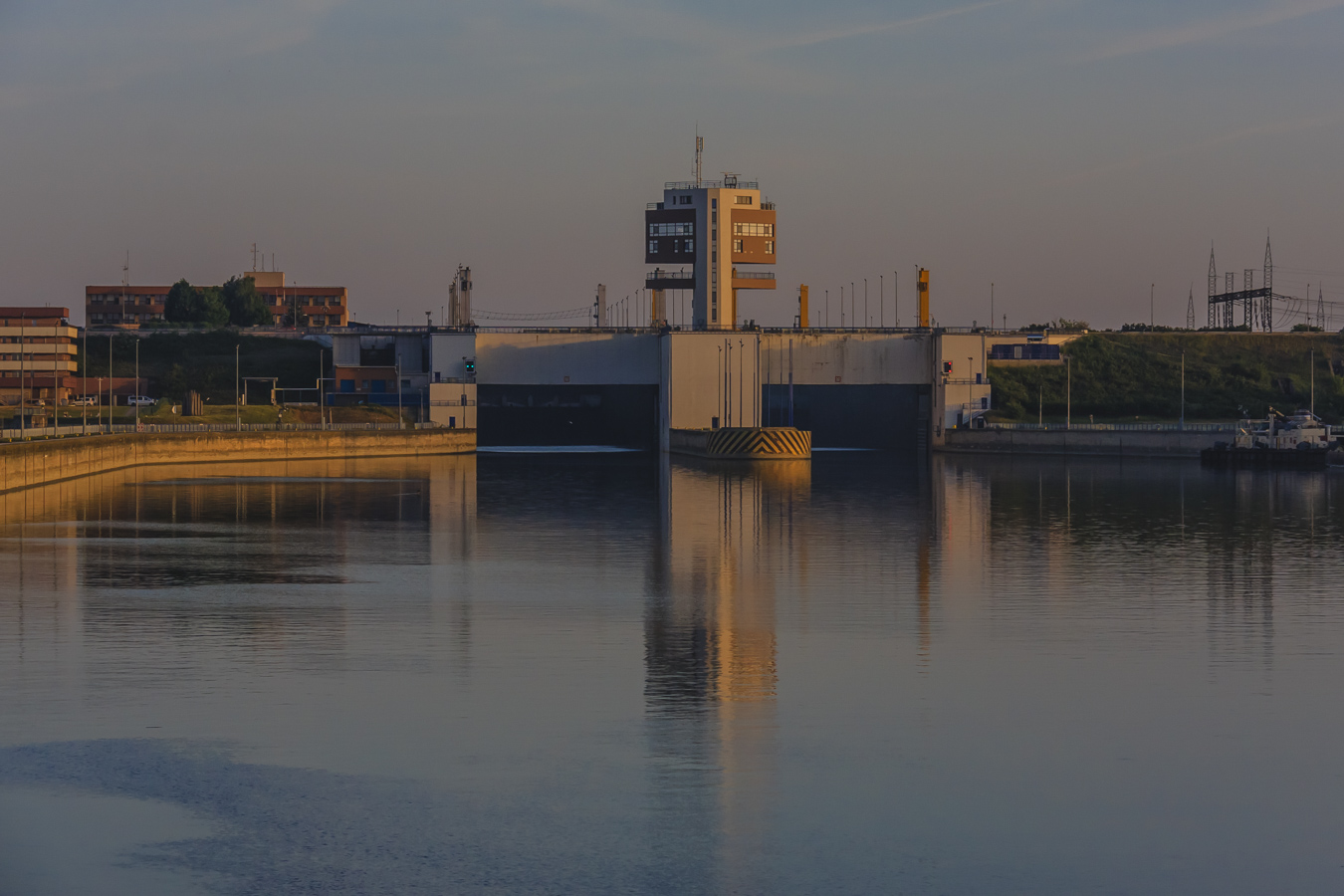On the second day of our cruise, I awoke early to catch some river scenes in the early morning light. As we approached Bratislava, our stop for the day we arrived at the impressive Gabcikovo Lock, the first of many on our way to Passau. Gabcikovo Lock consists of two main structures: a hydropower plant and two lock chambers. This level of the waterworks was designed to use differential water level to produce electricity, to allow ships to pass safely through locks and to divert flood water. The chambers are on the left bank of the Danube and the difference in water levels is about 20 metres. In 2012, after 20 years of service, 300.000 ships and 5,000,000 passengers have passed through the locks . Here’s a view of our approach.

We arrived in Bratislava by mid-morning and soon after departed on our excursion for the day; a walking, city tour.
Bratislava is the capital of Slovakia and, with a population of about 500,000, the country’s largest city. Bratislava is in southwestern Slovakia, occupying both banks of the River Danube and the left bank of the River Morava. Bordering Austria and Hungary, it is the only national capital that borders two independent countries.
Bratislava is the political, cultural and economic centre of Slovakia. It is the seat of the Slovak president, the parliament and the Slovak executive. It is home to several universities, museums, theatres, galleries and other important cultural and educational institutions. Many of Slovakia’s large businesses and financial institutions also have headquarters there.
The history of the city has been strongly influenced by people of different nations and religions, namely by Austrians, Czechs, Germans, Hungarians, Jews, Serbs and Slovaks.
The city was the capital of the Kingdom of Hungary a part of the larger Habsburg Monarchy, from 1536 to 1783. After the Communist Paraty seized power in Czechoslovakia in February 1948, the city became part of the Eastern Bloc. The city annexed new land, and the population rose significantly, becoming 90% Slovak. In 1968, after the unsuccessful Czechoslovak attempt to liberalise the Communist regime, the city was occupied by Warsaw Pact troops. Shortly thereafter, it became capital of the Slovak Socialist Republic, one of the two states of the federalized Czechoslovakia. Bratislava’s dissidents anticipated the fall of Communism in 1988, and the city became one of the foremost centres of the anti-Communist Velvet Revolution in 1989. In 1993, the city became the capital of the newly formed Slovak Republic following the Velvet Divorce from what is now the Czech Republic.
Today’s photos are presented as a slideshow, intended to offer a sense of the city. I also endeavoured to choose shots that I thought were simply interesting photographs.


Very nice images, Peter. As I did before, I’ve filed them for future travel reference. I also enjoyed the accompanying text. Thank you.